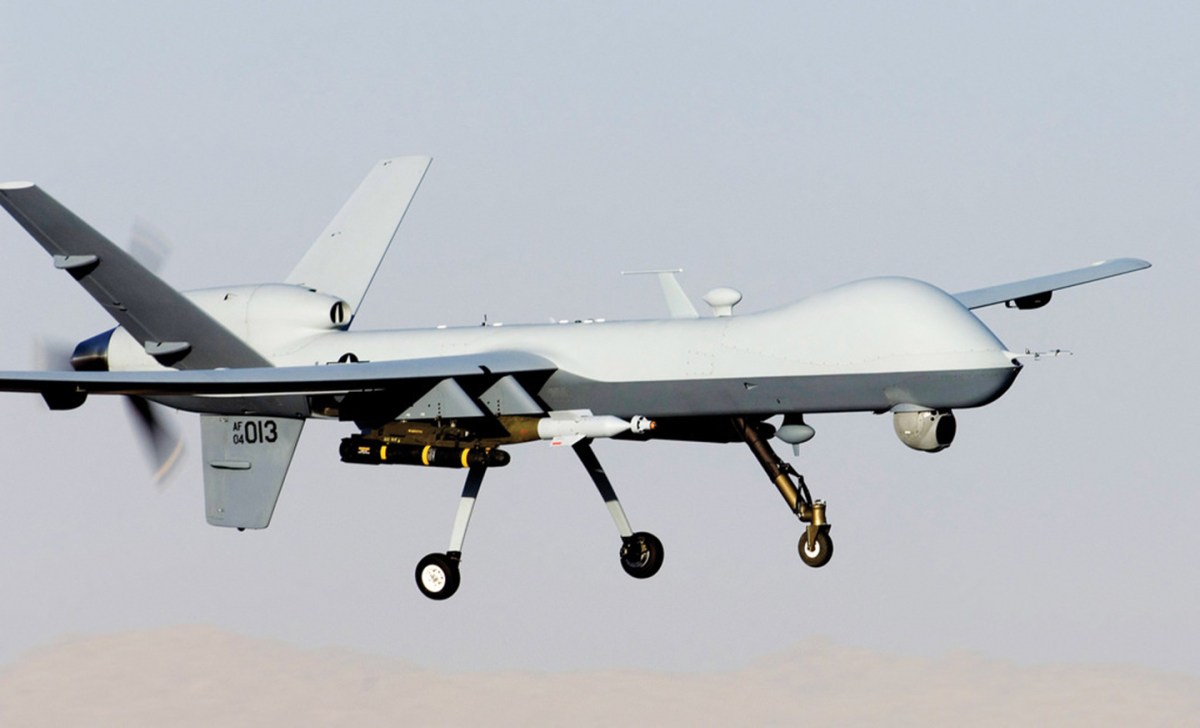By 2025, military-style drones will be visible 2,000 feet above U.S. cities, steaming high-resolution video to police departments on the ground, multiple defense contractors say. The drones are close relatives of those made famous during counterterrorism strikes in Afghanistan and Iraq.
The contractors are racing to build unmanned aircraft that can pass evolving airworthiness certifications and replace police helicopters, reports Defense One. If this is possible — and if it works — it would drastically change the way law enforcement interacts with cities and citizens.
Strict federal regulations govern any aircraft that flies through U.S. airspace, but most of them were written for manned aircraft. The FAA is currently working with the private sector to update its rules for unmanned flights. This could open floodgates, writes Defense One; once unmanned flight is released from regulations, the market for large unmanned planes could be huge.
“The market won’t exist until the regulations exist,” University of Maryland Unmanned Aircraft Systems Test Site director Matthew Scassero told Defense One. “The FAA was a little slow in coming around to the realization that we needed to get those in place.”
Scassero said that Lockheed Martin and Northrop Grumman are also working on unmanned devices, but not as hard as General Atomics. The firm believes “its future depends on building an unmanned aircraft that can fly more or less freely over civilian areas in the United States and Europe,” writes Defense One.
Because of this, the California-based company is pouring money into a long-winder, farther-flying variant of the Reaper, renamed the MQ-9B. In a historic exhibition, General Atomics flew an MQ-9B some 275 miles from an airfield in Yuma, Arizona, to the company’s private airstrip in Grey Butte, just north of Los Angeles. Part of this flight required a special FAA waiver and a piloted chase plane. Officials hope to have proper FAA certification for free flight by 2025.
The FAA guidelines for air-worthiness say a plane must be able to fly in all sorts of weather and survive a direct lightning strike. To meet these requirements, General Atomics created a new skin with “a thin mesh of copper just beneath the surface,” according to Defense One. All General Atomics drones are piloted remotely from a desk with monitors and controls.
But why do we need military-esque drones in U.S. skies? According to Defense One, the answer is distance and endurance. Larger drones can last for days, as opposed to manned chopper flights that are limited by how long the pilot and operator can endure the mission. They also offer new capabilities for firefighters, who could have persistent surveillance of fires and their crews at all hours.
However, drones like this represent a big problem for privacy advocates, writes Defense One.
“There is a lot of potential for privacy abuse if a surveillance device can identify a human at five kilometers away,” Julia Horwitz, Electronic Privacy Information Center’s consumer protection counsel, told The Washington Post back in 2009 after the military planned to launch JLENS, a 242-foot aerostat over Maryland.
Back in 1989, during Florida vs. Riley, the Supreme Court ruled that police helicopters flying over private property did not violate privacy because anything “that can be observed is in the open … even the contents of greenhouse with high shades blocking the view of the street.” The case came about after police saw someone growing marijuana in a greenhouse.
Defense One says that the ability to continuously survey an “entire city opens a wide variety of potential uses, and misuses, that will test communities’ comfort level with far more constant police presence overhead.”
This article appeared in an InsideHook newsletter. Sign up for free to get more on travel, wellness, style, drinking, and culture.























